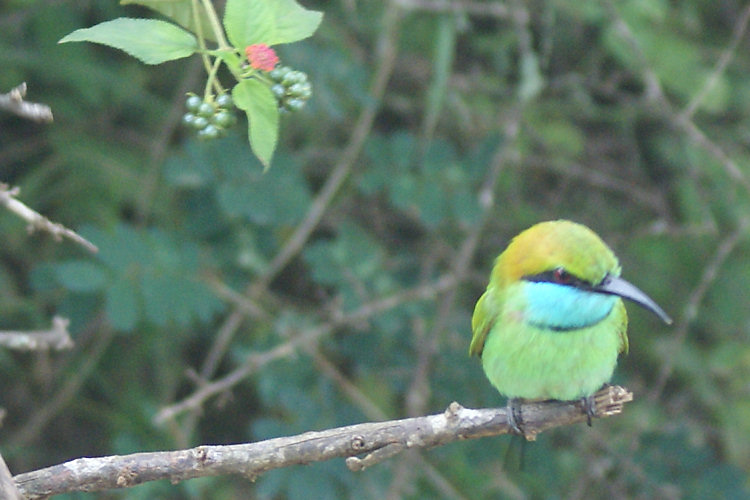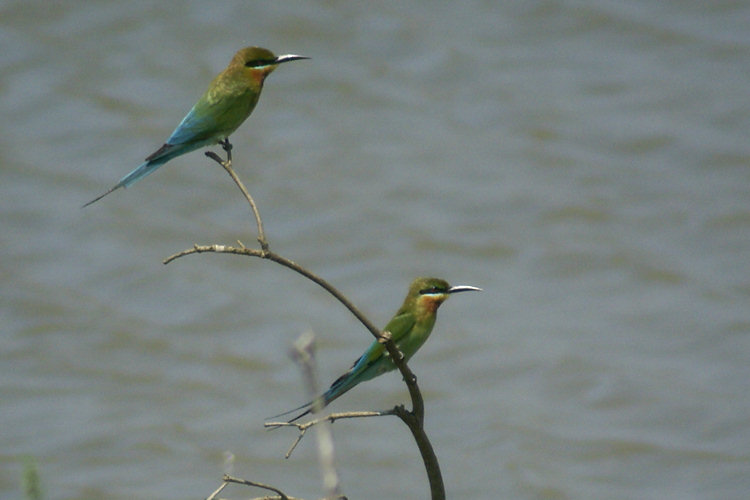Green Bee Eater Birds in Yala National Park
One of the prettiest birds in the Sri Lankan Jungle is the Delightful Green Bee Eaters. Look out for them perched on old tree stumps and branches. Although they are called bee-eaters they do not just gobble down pollen carrying bumble bees.

Yala National Park Sri Lankan Green Bee Eater Birds
Most insects that fly are considered food. Grasshoppers, beetles, termites, moths and butterflies are also on the menu. They use their elevated perches to spot insects on the wing. They then work out an interception path and off they zoom to catch dinner.
You may be lucky to spot a Green bee eater bird who has just caught a wasp or bee. Notice how it repeatedly bangs it around. It is trying to kill it by breaking its exoskeleton. Watch how it removes the sting before swallowing its prey. Some birds have been observed to eat over 200 bees a day.
They are quite social birds and will seek other Green-bee eaters out to congregate. They probably just like a good natter. Some of these groups can be large and noisy. If disturbed they explode into the sky and go back to their own individual roosting tree.

A pair of Sri Lankan Green Bee Eater Birds looking out for flying insects in Yala National Park
If you see lots of holes in a sand bank you have probably come across the nesting site of Green Bee Eaters. They use their long beak to scratch away the sand and make a tunnel. It can take up to 20 days to produce a tunnel that is long enough. The length of these tunnels varies from 70 to 150 cm long. They do not build a nest. The eggs are laid on the ground and both male and female birds take it in turn to incubate the eggs.
The young chicks hatch in about 14 days and fledge in just under 4 weeks. The parents continue to feed them insects for about 3 weeks after they have left the nest. Due to its choice of underground dusty and dirty accommodation bee eaters regularly take baths in shallow water and enjoy dust baths. They have to do this in an effort to rid themselves of the small ectoparasites that often infect their skin. Bee eaters are at risk from loss of breeding sites and the decline of insects due to the commercial use of insecticides.
Travel books

